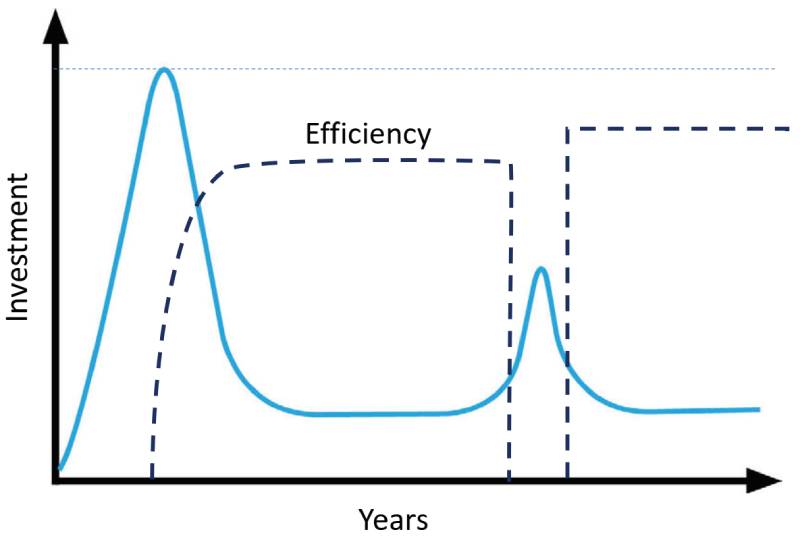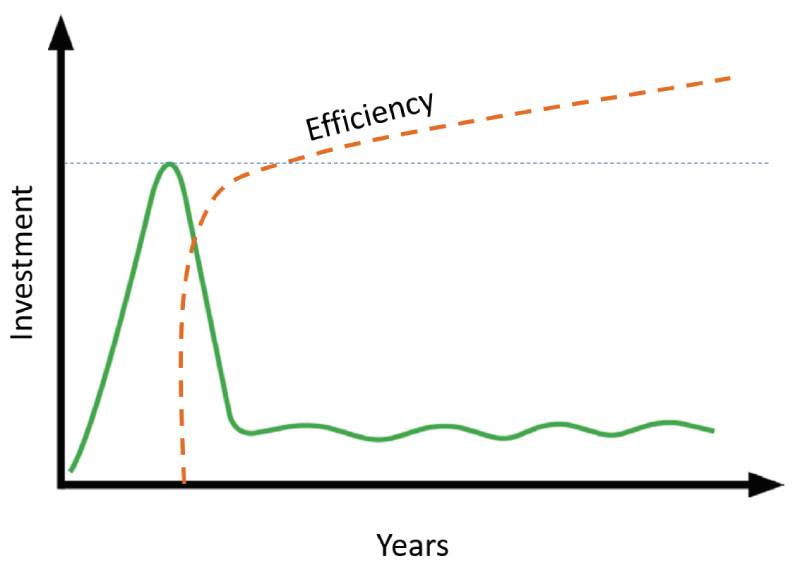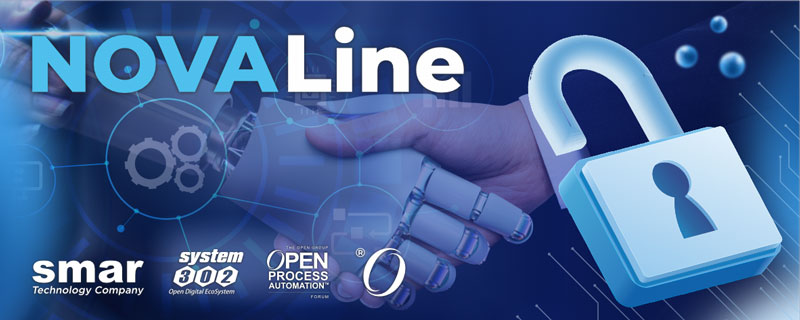
Line NOVA O-PAS
O-PAS – The Standard Of Standards
Going against the development of open and interoperable technologies for instrumentation equipment and IT systems are control systems, the vast majority of which are closed and proprietary. Maintaining and updating these systems is expensive, in addition to being challenging when it comes to incorporating new technologies, especially from third parties. It is due to this scenario, and from an end-customer initiative, that the Open Process Automation™ Forum (OPAF) emerged. The Forum is a consensus-based group of end users, vendors, systems integrators, standards organizations, and academic entities that addresses technical and business issues for process automation.
| Today's Typical CapEx Model | OPAF CapEx Model |
 |
 |
|
|
OPAF aims to define standards for an open, interoperable and secure process automation architecture. The standards defined by OPAF allow the development of products that, regardless of manufacturer, are easily integrated through a modular architecture characterized by open standard interfaces. OPAF does not aim to create a new standard, the priority is to select standards from existing industrial technologies. The standardization work was developed considering the impact of 23 key quality attributes:
Accessibility
Ability to provide products and services at a low cost for updates and upgrades
Compatibility
Ability for different systems, devices, software or electronic components to work together effectively and without conflicts.
Reliability
Ability to perform tasks under established conditions. The ability of a system or component to perform its required functions under established conditions for a specified period of time.
Configurability
Ability for a system or product to be adjusted and customized according to the user's needs and preferences.
Compliance
Ensure that products, systems, practices and processes meet specific requirements for security, privacy, accessibility, interoperability and other established standards.
Detectability
Ability to identify or detect the presence of certain events, conditions, threats, problems or characteristics in a system, application, network or technological environment.
Availability
Ability of a system, service, application or resource to be accessible and operational for use when needed, without significant interruptions or failures.
Scalability
Ability of a system, application, service or infrastructure to grow and adapt to meet increasing demands or greater workloads without a significant degradation in performance or quality of service.
Evolvability
Ability of a technological solution to remain relevant and functional by incorporating new features, accommodating changing user demands, adopting new technologies or adjusting to new requirements without the need for complete redesign or replacement.
Flexibility
Ability of a system, software, device or technological solution to adapt and respond effectively to a variety of scenarios, requirements and changing conditions of use.
Manageability
Ability to efficiently manage, control and supervise systems, networks, applications, resources or technological assets. Manageability is a critical characteristic that aims to simplify operations, improve efficiency and facilitate the maintenance of complex environments.
Interchangeability
Ability for a component to be replaced with an equivalent component from another supplier without modification. This requires that the interfaces between components are clearly defined.
Interoperability
The ability of two or more systems or components to exchange information and use the information that has been exchanged. This requires that the flow of information in an interface is provided as a critical part of the interface definition.
Maintainability
Ability of a system, software, device or solution to be easily maintained, updated and repaired over time. A solution with good maintainability is designed to allow modifications, corrections and improvements efficiently, minimizing the time and resources needed to carry out these tasks.
Modularity
How much a computer system or program is composed of discrete components such that a change to one component has minimal impact on other components
Portability
A system or component can be transferred from one hardware or software environment to another.
Securability
Ability to protect against unauthorized access. The ability of a system or component to be protected from unauthorized access or modification throughout its life cycle.
Traceability
Ability to track and document the history of changes, events, activities or transactions in systems, software, databases or any other technological infrastructure.
Resilience
Ability of a system, application, infrastructure or network to continue functioning effectively and reliably, even in the face of failures, interruptions, threats or adversity.
Reusability
Ability to reuse components, code, modules, or other software or hardware elements in different contexts or projects without the need to recreate them from scratch.
Safety
The expectation of not causing material, human or environmental damage. The expectation that a system or component will not, under defined conditions, lead to a state in which human life, health, property, or the environment are endangered.
Testability
Ability of a system, software, application or device to be easily tested in a systematic and effective manner. This implies the ability to identify, isolate and correct problems or failures in the functioning of technology through tests, verifications and validations.
Usability
Quality of a system, software, application, device, or user interface that makes it easy to use, efficient, and accessible to its end users.
This group of standards defined by OPAF is called O-PAS, Open Process Automation™ Standard, known as the Standard of Standards.
"We use essential cookies and similar technologies in accordance with our Privacy Policy and by continuing to browse, you agree to these conditions." Read more








